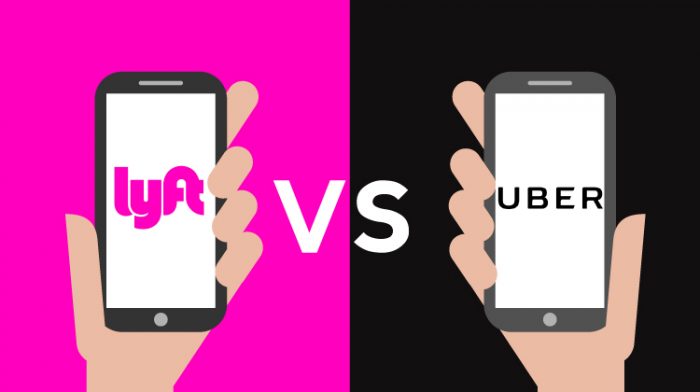On October 19 Lyft announced in a blog that it received a $1 billion investment from Alphabet inc., Google’s parent company. In January 2014 it very much looked like Uber was going to be the single, dominant platform, as it was sitting at a 91% market share in the US compared to the 8% market share of Lyft.(marketrealist.com). As of August 2017 however, Uber’s US market share seems to have declined to 74.3%, while Lyft’s market share increased to 23.4%. (marketrealist.com) It looks like the momentum lies with Lyft for now, but will the emerging competitor ever be able to take the lead?
First of all, let us look at the market for transportation apps and determine whether or not the conditions for a winner takes all market as defined by Eisenmann et al. apply.
Strong positive cross-side network effects are definitely present. More available drivers will mean that consumers are able to more quickly find a ride, while more available customers will mean that drivers endure less idle time.
It is unlikely that differentiated platforms will emerge, as differentiation opportunities are virtually nonexistent. Passengers want speed and quality and the only thing drivers care about is making as much money as possible. Currently Lyft and Uber are very similar applications, and I do not see this changing in the future.
The only argument against a winner takes all market is the fact that multi-homing costs are not high in this market. It is easy to drive for both Lyft and Uber, and maintaining two mobile applications instead of one does not take much effort. Personally I am of the opinion that this fact is not too relevant, as great monopolies have arisen in the past despite of low multi-homing costs e.g. EBay.
I personally think Lyft is more than capable of completely taking over the market, mainly because of how strong network effects are in this market. Lyft definitely has the momentum right now, mainly because of the managerial scandals that are plaguing Uber. Lyft can learn from the mistakes Uber made by professionalizing at an earlier stage, and is doing so. Alongside the investment, David Lawee will be joining Lyft’s board of directors, a man with a lot of corporate experience from working at google. (blog.lyft.com)
References and sources:
Eisenmann, T., Parker, G. and Van Alstyne, M. (2006). Strategies for Two- Sided Markets. Harvard Business Review, October, pp.8-9.
Alphabet’s CapitalG Leads $1 Billion Round in Lyft. (2017). [Blog] Lyft Blog. Available at: https://blog.lyft.com/posts/alphabet-capitalg-leads-1-billion-round-in-lyft [Accessed 22 Oct. 2017].
marketrealist.com. (2017). Why Uber’s Market Share Has Tanked. [online] Available at: http://marketrealist.com/2017/09/why-ubers-market-share-has-tanked/ [Accessed 22 Oct. 2017].


Hey Jan-Hein
Very interesting perspective on the battle between Uber and Lyft. I definitely agree in that there is very little multi-homing cost in this marketplace. I personally don’t think this will be a winner-takes all market and I think there are more and more players coming into the market. I also think there is very little multi-homing costs for the drivers instead. So how they treat their drivers as well as their customers matters a lot. The main difference in the US between Uber and Lyft is that in Lyft you are given the option to tip drivers and on Uber you are now able to pay a flat monthly subscription for Uber drivers to be your morning commute. I’m curious how you think these two new developments would affect the cross-side network effects of both markets and which strategic move you think is better in the ride-sharing market.